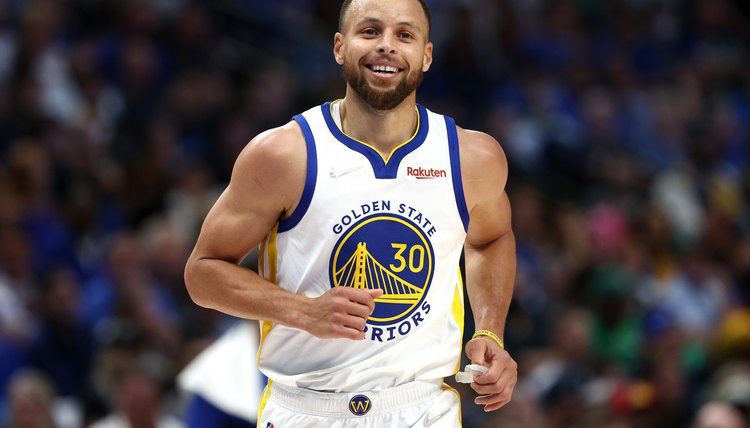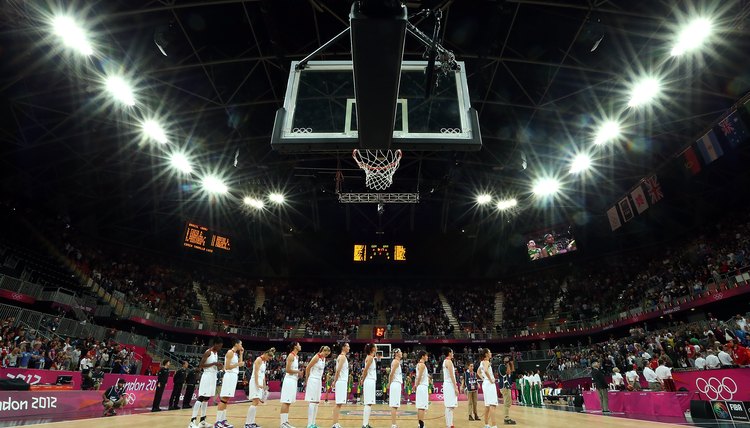What Is the Difference Between the Frontcourt & the Backcourt in Basketball?

In a basketball game, the frontcourt is the side of the court on which the team with possession of the ball is attempting to score, and is also known as that team's offensive end of the court. The backcourt is the half of the court that the team with the ball advances the ball from into the frontcourt.
Frontcourt Positions
A basketball team’s frontcourt is made up of players playing the following positions:
- Small Forward
- Power Forward
- Center
Typically, frontcourt players move around the free throw line and three-point line as offensive players, with the power forwards and centers spending most of their time near the basket.
On the defensive end, frontcourt players match up with basketball players of similar size and stature.
At the high school level, power forwards and centers are typically the biggest players on the team, and limited to shots around the rim. At the NCAA and NBA level, however, power forwards and centers can sometimes bring the ball up the floor and shoot long range shots.
Backcourt Positions

A team’s backcourt players are the point guard and shooting guard. Point guards and shooting guards are typically smaller, quick players who handle the team’s dribbling responsibilities when advancing the ball over the half-court line on offense.
As defensive players, the point guard and shooting guard defend the opposing team’s main dribblers and scorers, making their role critical on that end of the floor.
The shooting guard is typically responsible for scoring the most points between the two guards, while the point guard is expected to create plays by passing the ball to open players, such as the power forwards and centers.
Dimensions and Boundaries
The backcourt and frontcourt areas of a basketball court are separated by the midcourt line and are equal in dimensions. At the college basketball and professional basketball levels, the frontcourt and backcourt are an identical 47 feet long and 50 feet wide when measured to the out of bounds lines.
At the high school level, they measure 42 feet long and 50 feet wide. A court’s baseline and sidelines indicate the outer boundaries of the backcourt and frontcourt. During the flow of a game, the rules dictate when each team can possess the ball in the frontcourt and backcourt.

Basketball Rules for Frontcourt and Backcourt
Once a team completes a throw-in and advances the ball into the frontcourt, the ball may not leave that half of the court without incurring a penalty unless the ball bounces across due to being batted or tapped into the backcourt by an opposing player. If a player advances the ball into the frontcourt and then crosses back into the backcourt, a backcourt violation is called and the offensive team loses control of the ball.
If the offensive team fails to advance the ball into the frontcourt within an allotted amount of time, the team also loses possession of the ball. This allotted amount of time varies between the levels of play, with the NBA’s allotted time being the smallest at 8 seconds
References
Writer Bio
Lou Martin has been writing professionally since 1992. His work has appeared in the "Los Angeles Times," the "Long Beach Press-Telegram" and the "Deseret Morning News." Martin holds a Bachelor of Science in history and communication.
